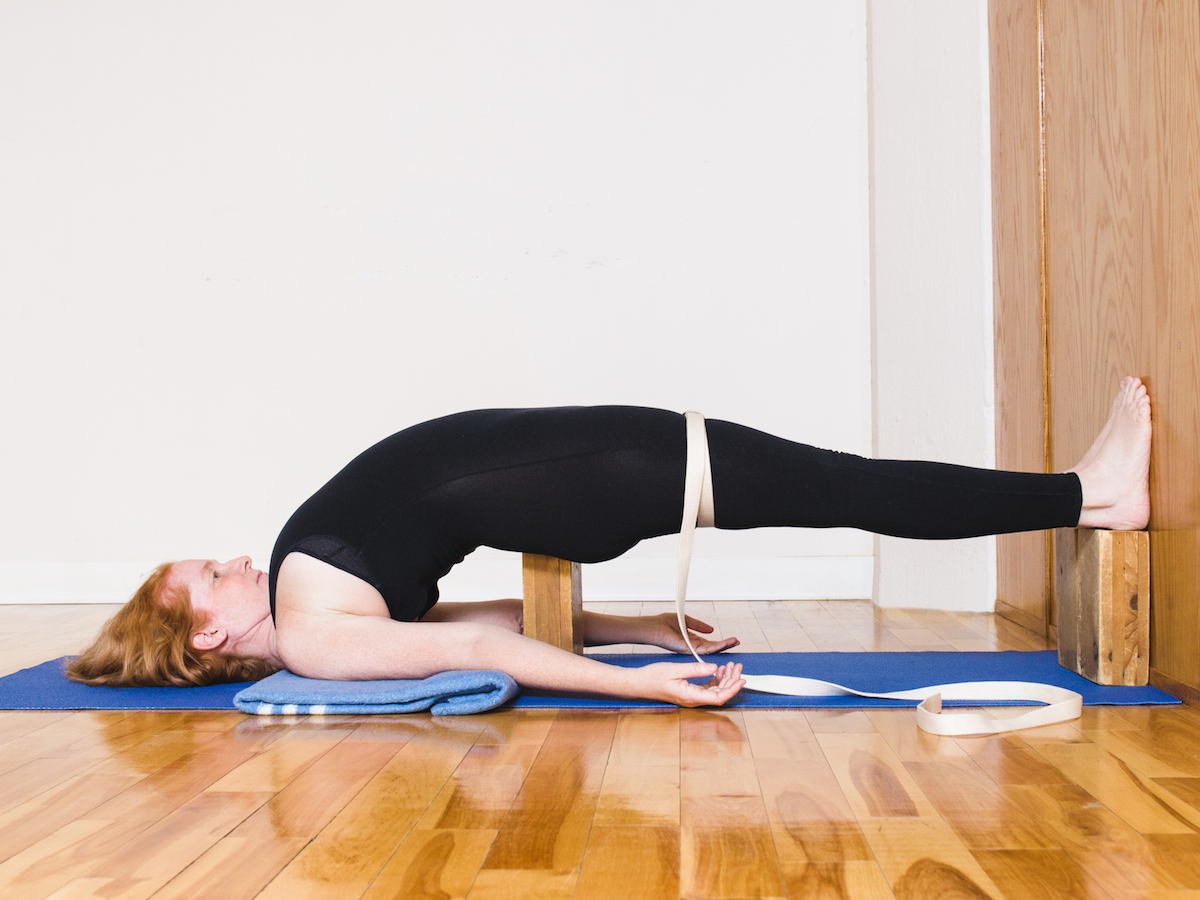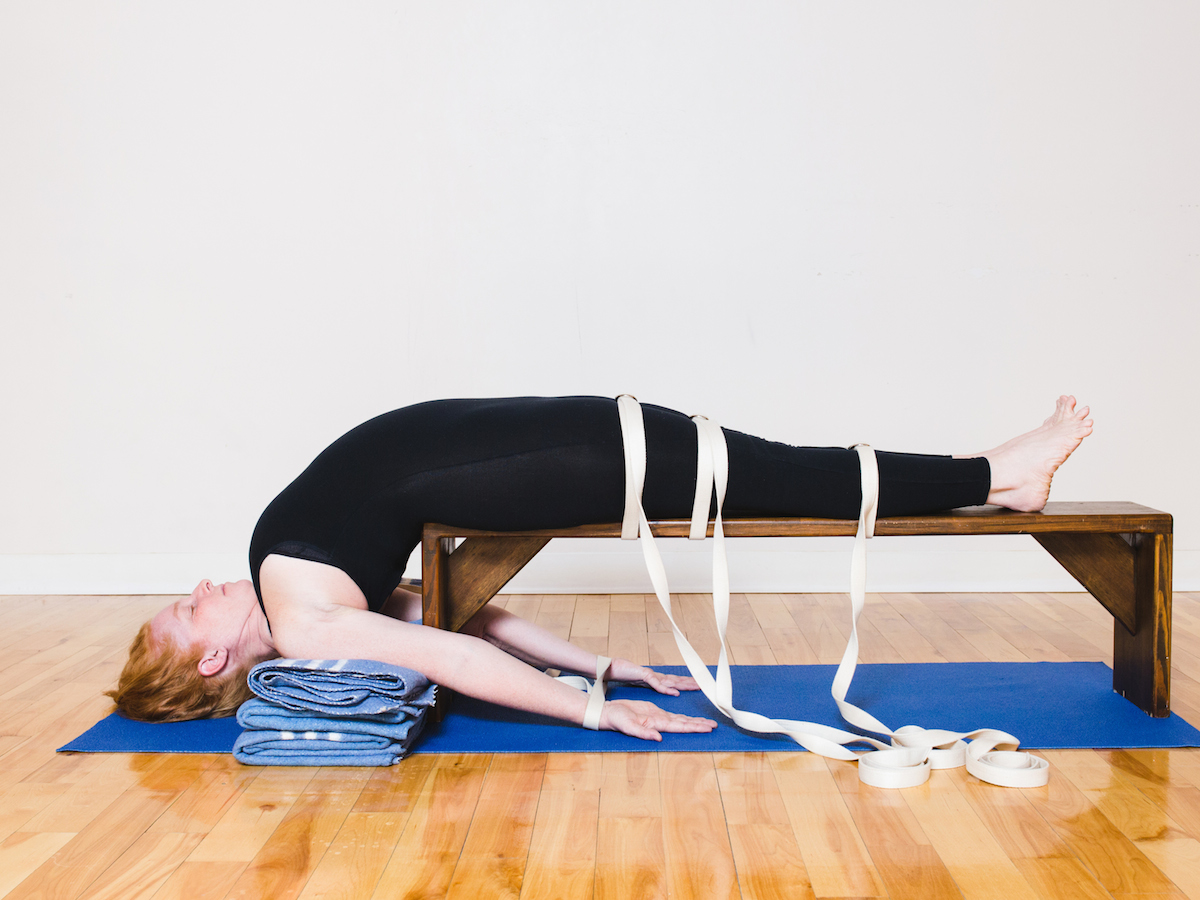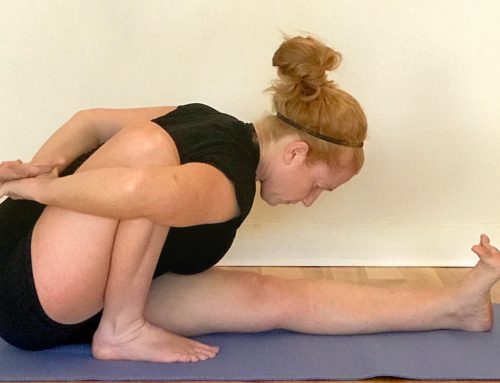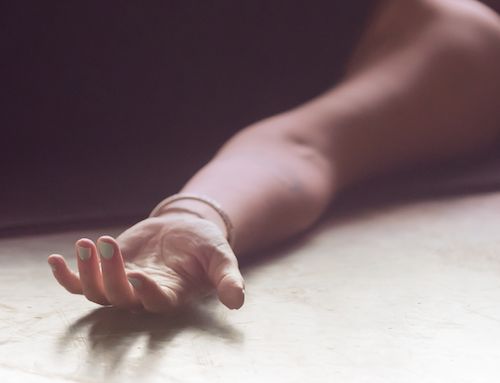Yoga Corner: Asana + Variations
The poses demonstrated here by Donna are intended to show the classical version of the pose, as well as the variations we use at United Yoga Montreal. Variations are introduced for a variety of reasons and purposes to aid in deepening our student’s understanding of the pose.
Supported Setu Bandha Sarvangasana
Supported Bridge Pose
At United Yoga Montreal, Supported Setu Bandha is part of a practice that our teacher Hart Lazer calls the Big 6. What are the postures included in the Big 6? They are Salamba Sirsasana (Headstand), Salamba Sarvangasana (Shoulderstand), Halasana (Plow), Supported Setu Bandha Sarvangasana (Supported Bridge Pose), Viparita Karani (Inverted Lake Posture) and Savasana (Corpse Pose).
Supported Setu Bandha helps to rest your heart but at the same time gives a feeling of exhilaration. It widens the pelvic girdle, stretches the abdominal area and expands your chest, which then creates space for the diaphragms of the body to relax and move freely. Supported Setu Bandha promotes mental stability and helps in balancing hormones and mood as do most inversions.
If Salamba Sarvangasana (Shoulderstand) and Halasana (Plow) are part of your practice, do Supported Setu Bandha (Supported Bridge Pose) after you practice Shoulderstand and Halasana to counter the effects.
If you’re not yet working with Shoulderstand, Supported Setu Bandha is a great way to prepare the body for the demands of Shoulderstand. It is also a good alternative for women during menses, who should not be inverting into Salamba Sarvangasana.
Click photos to enlarge…
Variation 1 – In this variation the legs are level with the pelvis. With the use of 3 blocs at the tallest height, 2 are used under the heels to support the legs and 1 under the mid-sacrum to support the pelvis. The feet are placed at the wall with the big toes touching and the inner heels slightly apart so that the little toes are in line with the outer heels. All 4 corners of the feet are pressing into the wall to help with the action of fully extending the legs. The belt around the mid thighs helps keep the legs moving in from the outer thighs to the inner thighs (adduction) and also helps to keep the legs moving inward (internal rotation). The blanket is placed under the upper arms and shoulders (not under the neck and head) to support the shoulders and also to create space at the back of the neck and protect C7. To deepen the pose, start turning the 2 blocks at the wall to reduce the height, until the heels eventually rest on the floor.
Variation 2 – As in Variation 1, the legs art still level with the pelvis, but the opening of the chest is a bit more pronounced. The yoga bench supports the heels, legs and pelvis. The 3 belts are fastened around the legs and the bench to keep the legs moving inwards and towards one another (adduction and inner rotation) and primarily to aid in grounding the femurs from the front of the thighs to the back of the thighs down into the bench. The blankets have to be built up to the place where the shoulders and upper arms are supported. The collarbones are placed at the edge of the blankets and the back of the neck and head are off the blankets; this creates space at the back of the neck and protects C7. The belt tied around the wrist keeps the wrists in line with the shoulders which then helps with the action of opening the chest.
Variation 3 – If working with the yoga bench is too deep, or a yoga bench is just not available, this variation with the chair and blocks is appropriate. With the feet at the wall and the calves on the chair, place two blocks, one high and one lower (see photo for bloc placement) to raise the pelvis to the same height of the legs (pelvis higher, legs lower when attainable). Creating the height at the pelvis and legs increases the chest opening, which is the purpose of this pose. The belt is placed at the mid thighs to keep the legs moving inward and towards one another. The blanket is placed under the upper arms and shoulders (not under the neck and head) to support the shoulders and also to create space at the back of the neck and protect C7. The back of the head is resting on the mat. The belt tied around the wrist keeps the wrists in line with the shoulders which then helps with the action of opening the chest.
Variation 4 – This variation is done using a sling around the mid sacrum. A belt is used to tighten the sling to bring the outer hips up and then inward towards one another to stabilize the pelvis. Feet are against the wall and heels are on the floor to deepen the Setu Bandha to its fullest expression. Blocks could be built up under the heels to the level of the pelvis, but no higher, to modify for different levels of ability. A blanket is placed under the shoulders and upper arms right to the edge of the collarbones to create space at the back of the neck and protect C7. The back of the head is resting on the mat.
Variation 5 – For a more recuperative, or gentle approach to Setu Bandha, try using a bolster horizontally under the heels and one vertically under the pelvis and place your lower shoulder blades right on the edge of that bolster in order to get the shoulders and back of the head on the floor. Place a belt at the mid thighs to keep the thighs moving inward and towards one another. And push your feet into the wall to lengthen your legs.
Prepared and demonstrated by Donna Read
Donna would like to express gratitude to her teacher, Hart Lazer and to his teachers for their inspiration and wisdom.

















